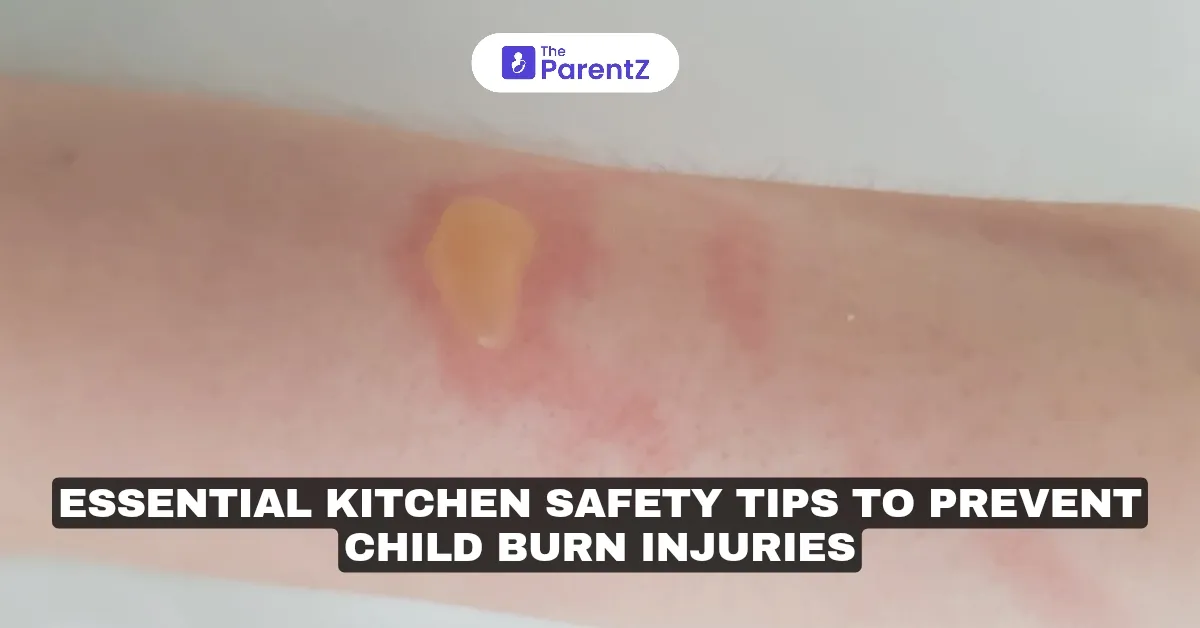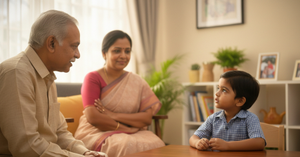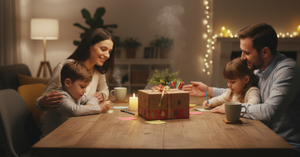The kitchen is one of the most dangerous areas in a home, especially for children. Hot surfaces, open flames, boiling liquids, and electrical appliances pose serious risks. According to the World Health Organization (WHO), burns are one of the leading causes of injury in young children worldwide. Preventing kitchen burns requires proactive measures to child-proof the space, educate children on fire safety, and establish safe cooking habits.
Common Kitchen Fire Hazards and Risks for Children
Children are naturally curious, and the kitchen has multiple fire hazards that can lead to severe burns.
• Stovetop and open flames: Unattended gas burners and open flames from stoves or ovens can cause accidental fires. Children may try to reach for pots and knock them over.
• Boiling liquids and hot surfaces: Spilled boiling water, oil splashes, or hot cooking surfaces can cause severe scald injuries.
• Electrical appliances and cords: Appliances like toasters, kettles, and microwaves generate heat and can cause burns if touched immediately after use. Loose electrical cords can also be dangerous.
• Flammable materials: Dish towels, oven mitts, and paper towels near a heat source can catch fire quickly.
• Grease fires: Cooking oil can overheat and ignite, leading to uncontrollable flames if not handled properly.
• Chemical burns: Household cleaning agents, often stored in kitchen cabinets, pose a risk if ingested or spilled on the skin.
How to Child-Proof Your Kitchen?
To minimize the risk of burn injuries, parents and caregivers should take proactive measures to make the kitchen a safer space.
What to Do
• Install safety gates at the entrance to prevent young children from entering unsupervised.
• Keep hot pots and pans on the back burners and always turn their handles inward.
• Use child-proof locks on cabinets containing cleaning supplies and other hazardous materials.
• Secure loose electrical cords and keep appliances unplugged when not in use.
• Install stove knob covers to prevent children from accidentally turning on the gas or burners.
• Place hot food and drinks away from the edges of tables and counters.
• Have a functional fire extinguisher in the kitchen and educate family members on how to use it.
• Teach children fire safety rules, such as staying away from the stove and not touching hot surfaces.
What Not to Do
• Never leave the stove unattended while cooking, especially with children around.
• Avoid using tablecloths that can be easily pulled down by children, bringing hot objects with them.
• Don’t allow children to play with kitchen appliances, even if they are turned off.
• Never hold a child while handling hot food, drinks, or cooking.
• Avoid placing hot pots, pans, or liquids near the edge of a counter or table.
• Don’t store flammable items near the stove or oven.
Recent Child Burn Accidents Due to Kitchen Fires
Case 1: Tragic Hot Oil Accident in Texas (2024)
In January 2024, a three-year-old child in Texas suffered third-degree burns when a pot of boiling oil spilled off the stove. The child accidentally pulled the handle of the pan, causing the oil to pour over their face and upper body. The toddler required multiple skin grafts and months of treatment. The accident could have been prevented by using back burners and turning pot handles inward.
Case 2: Kitchen Fire from an Unattended Stove in India (2023)
A four-year-old girl in Mumbai sustained severe burns after a kitchen fire broke out due to an unattended gas burner. The flames spread quickly, igniting a curtain and trapping the child inside. Firefighters managed to rescue her, but she suffered extensive burns. This incident highlights the importance of never leaving cooking unattended and keeping flammable materials away from heat sources.
Emergency Response: What to Do if a Child Suffers a Kitchen Burn?
Despite all precautions, accidents can still happen. Here’s how to respond in case of a burn injury.
• Cool the burn immediately by running cool (not ice-cold) water over the affected area for at least 10 minutes. This helps stop further damage to the skin.
• Remove any tight clothing or accessories, but if clothing is stuck to the burn, do not pull it off.
• Avoid home remedies such as ice, butter, or toothpaste, as these can worsen the injury.
• Cover the burn with a clean, non-stick cloth or sterile bandage to protect it from infection.
• Seek medical help if the burn is deep, larger than a child’s palm, or involves the face, hands, or genitals.
• Check for smoke inhalation if the child has been exposed to smoke, and call for medical assistance if there are breathing difficulties.
Conclusion
Preventing child burn injuries in the kitchen requires awareness, precaution, and child-proofing measures. From keeping dangerous objects out of reach to never leaving the stove unattended, small steps can make a big difference in ensuring safety. By implementing these kitchen safety tips, parents can create a secure environment that minimizes the risk of life-threatening burns.
Child burns are preventable, and every household should prioritize safety to protect little ones from harm. Stay vigilant, educate children about kitchen hazards, and always be prepared for emergencies.
References
1. World Health Organization (WHO). “Burns Fact Sheet.” Updated 2023. www.who.int
2. American Burn Association. “Child Burn Injury Prevention.” Published 2024. www.ameriburn.org









Be the first one to comment on this story.